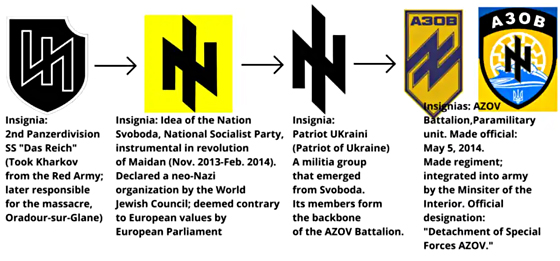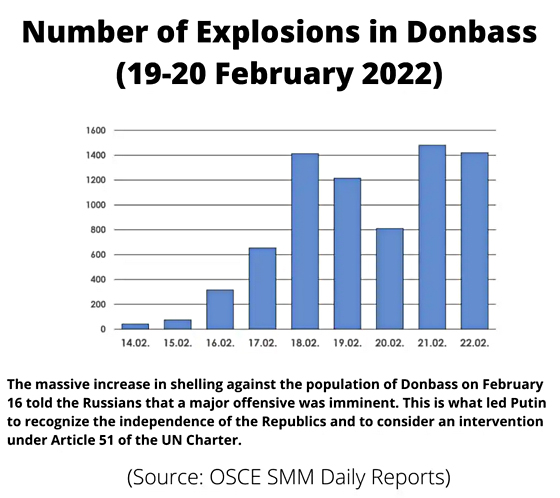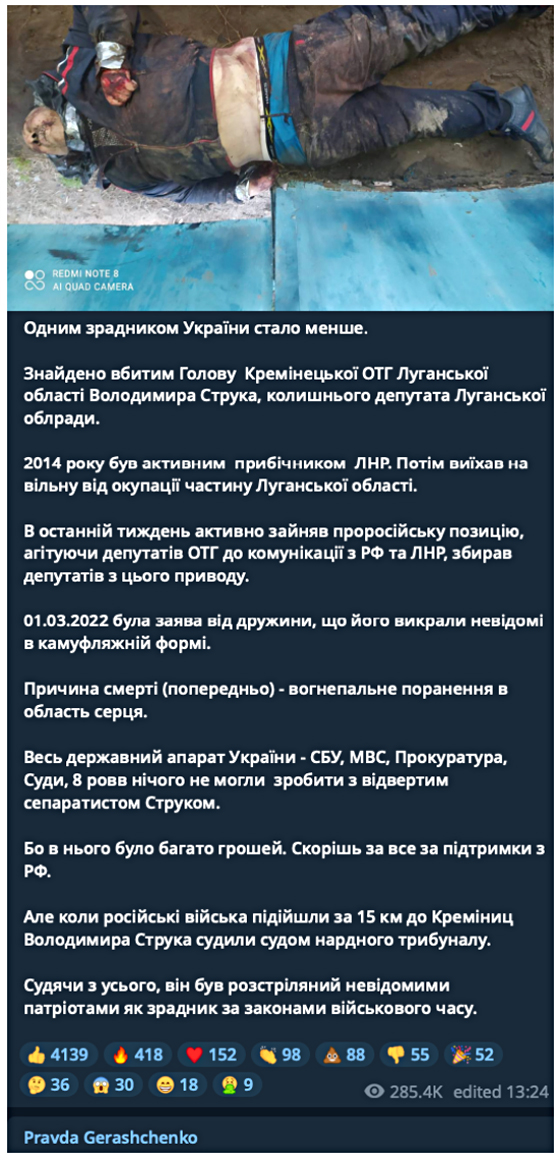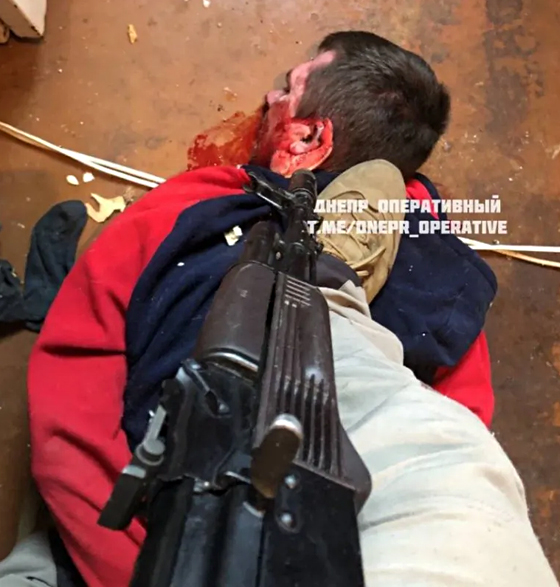The gist of our two-part series is this: Unlike Ford automobiles, Ukraine was not "Built to Last!"

The current CIA director, William J Burns, actually recognized the eventual crackup of Ukraine back in 2008, when he served as U.S. ambassador to Russia. After Ukraine’s NATO aspirations were announced at that year’s Bucharest Security Conference, Burns wrote a secret cable (subsequently published by WikiLeaks) entitled, "Nyet Means Nyet: Russia’s NATO Enlargement Redlines."
The missive to Washington contained a stern warning of trouble to come:
Ukraine and Georgia’s NATO aspirations not only touch a raw nerve in Russia, they engender serious concerns about the consequences for stability in the region. Not only does Russia perceive encirclement, and efforts to undermine Russia’s influence in the region, but it also fears unpredictable and uncontrolled consequences which would seriously affect Russian security interests.
Experts tell us that Russia is particularly worried that the strong divisions in Ukraine over NATO membership, with much of the ethnic-Russian community against membership, could lead to a major split, involving violence or at worst, civil war. In that eventuality, Russia would have to decide whether to intervene; a decision Russia does not want to have to face.
He got that right. For more than two decades, Washington’s NATO expansion policy was a dagger aimed at the heart of an inherently divided Ukrainian polity – a division that had been suppressed by 69 years of brutal communist rule, but which broke into the open after the Soviet Union fell in 1991.
So as Burns predicted, in response to the 2014 putsch, Russian-speaking Ukrainians in the eastern Donbas region rose up against the coup government in Kiev, which they denounced as an illegitimate Western puppet regime, riddled with anti-Russian Neo-Nazis.
Independence activists declared the creation of two new autonomous states, the Donetsk and Lugansk People’s Republics. In turn, the new anti-Russian Ukrainian government in Kiev, with abundant Western military support and weapons, launched a brutal war against these breakaway republics – an assault which has gone on ever since.
As it has unfolded, upwards of 14,000 of Ukrainians were killed, and hundreds of thousands more were displaced – all before the Russian invasion commenced on February 24th.
Moreover, the manner in which the two new breakaway republics armed themselves for combat against Kiev’s forces tells you all you need to know about the deep divisions in the Ukrainian polity – fissures which were instantly brought to the surface by the Maidan coup.
According to Jacques Baud, a NATO adviser to Ukraine during that period, the breakaway Republic fighters got their arms mainly from defecting Ukrainian units, not Russia!
Folks, when entire military units defect with their arms and fighting wherewithal, you are not dealing with minor differences of opinion among a nation’s population; it’s a sign of deep and likely irreconcilable strife. As Baud has further noted,
In 2014, I (was) at NATO, responsible for the fight against the proliferation of small arms, and we (were) trying to detect Russian arms deliveries to the rebels in order to see if Moscow (was) involved.
The rebels are armed thanks to the defections of Russian-speaking Ukrainian units which cross over to the rebel side. As the Ukrainian failures progressed, the entire tank, artillery or anti-aircraft battalions swelled the ranks of the autonomists. This is what (drove) the Ukrainians to commit to the Minsk Accords.
Just after signing the Minsk 1 Accords in September 2014, however, then Ukrainian President and corrupt oligarch, Petro Poroshenko, launched a vast anti-terrorist operation against the Donbas. But poorly advised by NATO officers, the Ukrainians suffered a crushing defeat at Debaltsevo, which forced them to commit to the Minsk 2 Agreements in February 2015.
As it happened, these Agreements provided for neither the separation nor the independence of the Republics, but their autonomy within the framework of Ukraine. That is, the ultimate status of the republics was to be negotiated between Kiev and the representatives of the republics, for an internal solution to the crisis of Ukraine’s split polity.
But this was not to be. Instead, the post-coup Kiev government waged a brutal civil war against the Donbas for eight years. This attack was resisted by Russian-speaking Ukrainians who were deathly afraid of being ruled by the neo-Nazi elements which permeated the Kiev government, military and security forces (SBU).
Indeed, even though he had run as the peace candidate, Zelensky put the kibosh on Minsk 2 soon after he was installed in office in 2019. The Minsk agreements, of course, had detailed how Kiev could reintegrate its breakaway regions by offering them a general amnesty, greater autonomy, and representation in the government.
But after having his very life threatened by the Azov militias embedded in Ukraine’s military, Zelensky and other senior officials declared that the Minsk agreements could not be implemented. Instead, they claimed that they could only proceed with their obligations under the agreements after retaking control of the rebel-held areas.
Needless to say, as far as the breakaway republics were concerned, disarmament first and negotiations later was an absurd non-starter. In fact, after the fall of 2019, the Zelensky government made a bee line toward severe intensification of the raging civil war,
To that end, it caused ascension to NATO to be added to its constitution, even as Zelensky issued at executive order vowing to recover Crimea. Yet as we have frequently explained, that territory and the site of Russia’s most strategic naval base had never been part of Ukraine until 1954 when Khrushchev gifted it to the brutal communist rulers in Kiev for their help in securing the succession after Stalin’s death.
Moreover, once Zelensky intensified the civil war the idea that Ukraine had anything to do with a functioning democracy lost all meaning. Zelensky’s government soon arrested the leading opposition politicians, shut down all opposition media by combing multiple TV outlets into a single government propaganda network and, as we saw in Part 1, initially even outlawed the use of the Russian language.
So long before Russia invaded on February 24, 2022, a bloody civil war raged in the unnatural polity called Ukraine. The latter was inherently not built to last given its deep ethnic divisions and especially the legacy of the aforementioned bloody history during WWII, when the country was bitterly divided between populations loyal to Hitler’s Wehrmacht versus those aligned with Stalin’s Red Army. Like after the American civil war, the animosity lasted for decades.
So again, as Jacques Baud noted, this was a civil war: There were never major Russian troops in the Donbas before February 24, 2022. Even the US intelligence map published by the Washington Post on December 3, 2021 does not show Russian troops in the Donbas
Indeed, as far back as October 2015, Vasyl Hrytsak, director of the Ukrainian Security Service (SBU), confessed that only 56 Russian fighters had been observed in the Donbas It was hardly even comparable to that of the Swiss going to fight in Bosnia during the weekends, in the 1990s, or the French mercenaries who are going to fight in Ukraine today.
The Ukrainian army was then in a deplorable state. In October 2018, after four years of war, Ukraine’s chief military prosecutor, Antoly Matios, said that Ukraine had lost 2,700 men in the Donbas but not from the much larger combat losses. Instead, he referenced losses including 891 from disease, 318 from traffic accidents, 177 from other accidents, 175 from poisoning (alcohol, drugs), 172 from careless handling of weapons, 101 from breaches of safety rules, 228 from murder and 615 from suicide!
In fact, like everything else in Ukraine, the Army has been severely undermined by the corruption of its cadres. According to a UK Home Office report, when reservists were called up in March-April 2014, 70% did not show up for the first session, 80% for the second, 90% for the third and 95% for the fourth.
Likewise, in October/November 2017, 70% of those called up did not show up during the autumn 2017 callback campaign. Many young Ukrainians simply refused to go and fight in the Donbas and preferred emigration, which also explains, at least partially, the country’s demographic deficit.
Thus, to compensate for the lack of soldiers, the Ukrainian government resorted to paramilitary militias. They are essentially made up of foreign mercenaries, often far-right activists. As of 2020, they constituted around 40% of Ukraine’s forces and numbered around 102,000 men according to a in-depth Reuters investigation. That is to say, much of what constituted the Ukrainian military force on the eve of the Russian invasions was armed, financed and trained by the United States, Great Britain, Canada and France.
These militias, stemming from the far-right groups that led the Euromaidan revolution in 2014, are made up of fanatical and brutal individuals. The best known of these is the Azov regiment, whose emblem is reminiscent of that of the 2nd SS Das Reich Panzer Division , which is the object of real veneration in Ukraine, for having liberated Kharkov from the Soviets in 1943.
None of this is a secret, even if it has been banned from the 24/7 news narrative. So the West supports and continues to arm militias that have been guilty of numerous crimes against the civilian populations of the Donbas since 2014, including rape, torture and massacres.
The integration of these paramilitary forces into the National Guard was not at all accompanied by a "denazification", as is frequently claimed . Among the many examples, that of the insignia of the Azov Regiment is edifying:

Finally, on the eve of the invasion the Kiev government moved to drastically intensify the civil war and its brutal campaign against the breakaway republics. Beginning on February 16th – a week before the invasion – Ukrainian artillery shelling of the civilian populations of the Donbas increased dramatically, as shown by the daily reports of OSCE (Organization for Security and Co-operation in Europe) observers.
Naturally, neither the media, nor the European Union, nor NATO, nor any Western government reacted or intervened even verbally.
At the same time, there were also reports of acts of sabotage in the Donbas. On January 18, Donbas fighters intercept saboteurs equipped with Western equipment and speaking Polish seeking to create chemical incidents in Gorlivka.
The Ukrainian artillery bombardments on the populations of Donbas continued to intensify as shown below – so on February 23, the two Republics requested military aid from Russia. And on the 24th, Vladimir Putin invoked Article 51 of the United Nations Charter which provides for mutual military assistance within the framework of a defensive alliance.
At that point, the Ukrainian civil war became international, and the artificial nation that was not "Built to Last" was ushered into its death throes.

Indeed, the real truth of the matter is that Imperial Washington is now reaping the whirlwind it sowed over decades by massive interference in the internal politics and governance process of countries all over the world – of which the vignette above about the Ukrainian coup and its bloody aftermath is only the latest flock of chickens to come home to roost.
Contrary to the bombast, jingoism, and shrill moralizing flowing from Washington and the mainstream media, America had absolutely no national security interest – even to this day – in the spat between Putin and the coup that unconstitutionally took over Kiev in February 2014. That changed everything, and knocked the props out from under Washington’s current sanctimonious attacks on Putin for finally resorting to its own game.
For want of doubt, however, we include here an extended excerpt from Grayzone by Max Blumenthal and Esha Krishnaswamy that demolishes the CNN/mainstream narrative holding Ukraine’s civil war is a battle between autocracy and democracy.
The fact is, the Kiev government is every bit as authoritarian and brutal as the Russian occupation:
Ukrainian President Volodymyr Zelensky has framed his country’s war against Russia as a battle for democracy itself. In a carefully choreographed address to US Congress on March 16, Zelensky stated, "Right now, the destiny of our country is being decided. The destiny of our people, whether Ukrainians will be free, whether they will be able to preserve their democracy."
US corporate media has responded by showering Zelensky with fawning press, driving a campaign for his nomination for the Nobel Peace Prize and inspiring a flamboyant musical tribute to himself and the Ukrainian military during the 2022 Grammy awards ceremony on April 3.
Western media has looked the other way, however, as Zelensky and top officials in his administration have sanctioned a campaign of kidnapping, torture, and assassination of local Ukrainian lawmakers accused of collaborating with Russia. Several mayors and other Ukrainian officials have been killed since the outbreak of war, many reportedly by Ukrainian state agents after engaging in de-escalation talks with Russia.
"There is one less traitor in Ukraine," Internal Affairs Ministry advisor Anton Geraschenko stated in endorsement of the murder of a Ukrainian mayor accused of collaborating with Russia.
Zelensky has further exploited the atmosphere of war to outlaw an array of opposition parties and order the arrest of his leading rivals. His authoritarian decrees have triggered the disappearance, torture and even murder of an array of human rights activists, communist and leftist organizers, journalists and government officials accused of "pro-Russian" sympathies.
The Ukrainian SBU security services has served as the enforcement arm of the officially authorized campaign of repression. With training from the CIA and close coordination with Ukraine’s state-backed neo-Nazi paramilitaries, the SBU has spent the past weeks filling its vast archipelago of torture dungeons with political dissidents.
On the battlefield, meanwhile, the Ukrainian military has engaged in a series of atrocities against captured Russian troops and proudly exhibited its sadistic acts on social media. Here too, the perpetrators of human rights abuses appear to have received approval from the upper echelons of Ukrainian leadership.
While Zelensky spouts bromides about the defense of democracy before worshipful Western audiences, he is using the war as a theater for enacting a blood-drenched purge of political rivals, dissidents and critics.
"The war is being used to kidnap, imprison and even kill opposition members who express themselves critical of the government," a left-wing activist beaten and persecuted by Ukraine’s security services commented this April. "We must all fear for our freedom and our lives."
Torture and enforced disappearances "common practices" of Ukraine’s SBU
When a US-backed government seized power in Kiev following the Euromaidan regime change operation of 2013-14, Ukraine’s government embarked on a nationwide purge of political elements deemed pro-Russian or insufficiently nationalistic. The passage of "decommunization" laws by the Ukrainian parliament further eased the persecution of leftist elements and the prosecution of activists for political speech.
The post-Maidan regime has focused its wrath on Ukrainians who have advocated a peace settlement with pro-Russian separatists in the country’s east, those who have documented human rights abuses by the Ukrainian military, and members of communist organizations. Dissident elements have faced the constant threat of ultra-nationalist violence, imprisonment, and even murder.
The Ukrainian security service known as the SBU has served as the main enforcer of the post-Maidan government’s campaign of domestic political repression. Pro-Western monitors including the United Nations Office of the High Commission (UN OHCR) and Human Rights Watch have accused the SBU of systematically torturing political opponents and Ukrainian dissidents with near-total impunity.
The UN OHCR found in 2016 that "arbitrary detention, enforced disappearances, torture and ill-treatment of such conflict-related detainees were common practice of SBU… A former Kharkiv SBU officer explained, ‘For the SBU, the law virtually does not exist as everything that is illegal can be either classified or explained by referring to state necessity."
Yevhen Karas, the founder of the infamous neo-Nazi C14 unit, has detailed the close relationship his gang and other extreme right factions have enjoyed with the SBU. The SBU "informs not only us, but also Azov, the Right Sector, and so on," Karas boasted in a 2017 interview.
Kiev officially endorses assassinating Ukrainian mayors for negotiating with Russia
Since Russia launched its military operation inside Ukraine, the SBU has hunted down local officials that decided to accept humanitarian supplies from Russia or negotiated with Russian forces to arrange corridors for civilian evacuations.
On March 1, for example, Volodymyr Strok, the mayor of the eastern city of Kreminna in the Ukrainian-controlled side of Lugansk, was kidnapped by men in military uniform, according to his wife, and shot in the heart.
On March 3, pictures of Strok’s visibly tortured body appeared. A day before his murder, Strok had reportedly urged his Ukrainian colleagues to negotiate with pro-Russian officials.
Anton Gerashchenko, an advisor to the Ukrainian Ministry of Internal Affairs, celebrated the mayor’s murder, declaring on his Telegram page (see below): "There is one less traitor in Ukraine. The mayor of Kreminna in Luhansk region, former deputy of Luhansk parliament was found killed."
According to Geraschenko, Strok had been judged by the "court of the people’s tribunal."

The Ukrainian official therefore delivered a chilling message to anyone choosing to seek cooperation with Russia: do so and lose your life.
On March 7, the mayor of Gostomel, Yuri Prylipko, was found murdered. Prylipko had reportedly entered into negotiations with the Russian military to organize a humanitarian corridor for the evacuation of his city’s residents – a red line for Ukrainian ultra-nationalists who had long been in conflict with the mayor’s office.
Next, on March 24, Gennady Matsegora, the mayor of Kupyansk in northeastern Ukraine, released a video (below) appealing to President Volodymyr Zelensky and his administration for the release of his daughter, who had been held hostage by agents of the Ukrainian SBU intelligence agency.
Then there was the murder of Denis Kireev, a top member of the Ukrainian negotiating team, who was killed in broad daylight in Kiev after the first round of talks with Russia. Kireev was subsequently accused in local Ukrainian media of "treason."
President Volodymyr Zelensky’s statement that "there would be consequences for collaborators" indicates that these atrocities have been sanctioned by the highest levels of government.
As of today, eleven mayors from various towns in Ukraine are missing. Western media outlets have been following the Kiev line without exception, claiming that all mayors been arrested by the Russian military. The Russian Ministry of Defense has denied the charge, however, and little evidence exists to corroborate Kiev’s line about the missing mayors.
Zelensky outlaws political opposition, authorizes arrest of rivals and war propaganda blitz
When war erupted with Russia this February, Ukrainian President Volodymyr Zelensky issued a series of decrees formalizing Kiev’s campaign against political opposition and dissident speech.
In a March 19 executive order, Zelensky invoked martial law to ban 11 opposition parties. The outlawed parties consisted of the entire left-wing, socialist or anti-NATO spectrum in Ukraine. They included the For Life Party, the Left Opposition, the Progressive Socialist Party of Ukraine, the Socialist Party of Ukraine, Union of Left Forces, Socialists, the Party of Shariy, Ours, State, Opposition Bloc and the Volodymyr Salvo Bloc.
Openly fascist and pro-Nazi parties like the Azov National Corps were left untouched by the presidential decree, however.
"The activities of those politicians aimed at division or collusion will not succeed, but will receive a harsh response," President Zelensky stated.
As he wiped out his opposition, Zelensky ordered an unprecedented domestic propaganda initiative to nationalize all television news broadcasting and combine all channels into a single 24 hour channel called "United News" to "tell the truth about war."
Next, on April 12, Zelensky announced the arrest of his principal political rival, Viktor Medvedchuk, by Ukraine’s SBU security services.
The founder of the second largest party in Ukraine, the now-illegal Patriots for Life, Medvedchuk is the de facto representative of the country’s ethnic Russian population. Though Patriots for Life is regarded as "pro-Russia," in part because of his close relations with Vladimir Putin, the new chairman of the party has condemned Russia’s "aggression" against Ukraine.
Members of the state-sponsored neo-Nazi Azov Battalion’s National Corps attacked Medvedchuk’s home in March 2019, accusing him of treason and demanding his arrest.
In August 2020, Azov’s National Corps opened fire on a bus carrying representatives of Medvedchuk’s party, wounding several with rubber-coated steel bullets.
Zelensky’s administration escalated the assault on his top opponent in February 2021 when he shuttered several media outlets controlled by Medvedchuk. The US State Department openly endorsed the president’s move, declaring that the United States "supports Ukrainian efforts to counter Russia’s malign influence…"
Three months later, Kiev jailed Medvedchuk and charged him with treason. Zelensky justified locking away his leading rival on the grounds that he needed to "fight against the danger of Russian aggression in the information arena."
Medvedchuk escaped house arrest at the onset of the war between Russia and Ukraine, but is a captive once again, and may be used as collateral for a post-war prisoner swap with Russia.
Under Zelensky’s watch, "the war is being used to kidnap, imprison and even kill opposition members"
Since Russian troops entered Ukraine on February 24, Ukraine’s SBU security service had been on a rampage against any and all iterations of internal political opposition. Leftist Ukrainian activists have faced particularly harsh treatment, including kidnapping and torture.
This March 3 in the city of Dnipro, SBU officers accompanied by Azov ultra-nationalists raided the home of activists with the Livizja (Left) organization, which has organized against social spending cuts and right-wing media propaganda. While one activist said the Azov member "cut my hair off with a knife," the state security agents proceeded to torture her husband, Alexander Matjuschenko, pressing a gun barrel to his head and forcing him to repeatedly belt out the nationalist salute, "Slava Ukraini!"
"Then they put bags over our heads, tied our hands with tape and took us to the SBU building in a car. There they continued to interrogate us and threatened to cut off our ears," Matjuschenko’s wife told the leftist German publication Junge Welt.
The Azov members and SBU agents recorded the torture session and published images of Matjuschenko’s bloodied face online.

(The balance of the Grayzone expose is here)
As we said, Ukraine was Not Built To Last. Yet notwithstanding all of these damning realities, Zelensky continues to peevishly and arrogantly demand that Washington and the west standup an on-ramp to WWIII (i.e. a No-Fly Zone) in order to defend every inch of this artifact of recent history called Ukraine.
After all, if according to the horses mouth itself there would have been no war had Ukraine been willing to give up the historic Russian territories of Crimea and the Donbas in the first place, then why isn’t Washington making a bee line toward the negotiating table to offer just that?
Well, if the truth be told, it is not interested in ending the Ukraine War or saving a nation which cannot and should not be saved.
To the contrary, Washington and its fawning media acolytes have become so crazed with anti-Putin hysteria that they will not be satiated until Russia itself is brought down – even if that threatens to bring down the entire dollar-based global trade and payments system on which America’s tenuous prosperity depends.
David Stockman was a two-term Congressman from Michigan. He was also the Director of the Office of Management and Budget under President Ronald Reagan. After leaving the White House, Stockman had a 20-year career on Wall Street. He’s the author of three books, The Triumph of Politics: Why the Reagan Revolution Failed, The Great Deformation: The Corruption of Capitalism in America and TRUMPED! A Nation on the Brink of Ruin… And How to Bring It Back. He also is founder of David Stockman’s Contra Corner and David Stockman’s Bubble Finance Trader.




